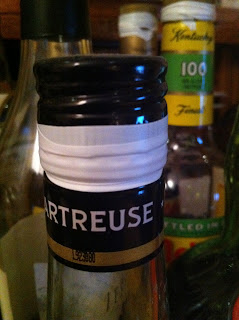 |
| Detail of Salsa de Venas by Michel Zabé |
- Discarding seeds and veins makes a more texturally refined dish
- Seeds and veins tend to contain larger concentrations of capsaicin, the compound that makes hot chiles hot. Discarding them helps to temper that heat and let the flavor of the flesh become more apparent.
 Patricia Quintana does just that. In her 2005 book, Mulli: el libro de los moles, she details about a hundred salsas, moles, adobos, and pipianes that draw on Mexico’s culinary history from pre-Colombian times. From the Valle de Toluca (an area west and slightly south of Mexico City), she pulls a roasted tomato table salsa that’s heavily laced with those veins we’re supposed to throw away.
Patricia Quintana does just that. In her 2005 book, Mulli: el libro de los moles, she details about a hundred salsas, moles, adobos, and pipianes that draw on Mexico’s culinary history from pre-Colombian times. From the Valle de Toluca (an area west and slightly south of Mexico City), she pulls a roasted tomato table salsa that’s heavily laced with those veins we’re supposed to throw away. This isn’t an incendiary salsa, but neither is it for milquetoasts. Don’t spring it on your family or friends if they don’t like a bit of heat. Here’ s my translation of Quintana:
Toluca Valley-style Salsa de Venas
1 cup of veins from pasilla, negro, guajillo, or ancho chiles cleaned and dry-roasted
4 medium garlic cloves, peeled, roasted
½ medium onion, roasted
4 medium tomatoes, roasted
½ cup of water or to taste
1 ½ teaspoons coarse salt or to taste
To prepare the salsa:
Rinse and dry the chile veins. Preheat a comal or skillet and cook until toasted, but not burned. Roast the garlic too, onion, and tomatoes in the same pan until they turn dark. Allow to cool. In a molcajete or food processor, grind the chile veins with the salt and garlic, regrinding it all well. Add the onion and continue grinding. Add the tomatoes and grind until the sauce thickens,then add the water and re-season.
Presentation:
Serve in a mortar and pestle or in a sauce boat. Serve with fried charales [tiny, tiny fish] and freshly made tortillas.Quintana's original directions:
Salsa de venas estilo Valle de Toluca
1 taza de venas de chile pasilla, negro o guajillo, o de chile ancho limpias, secas, tostadas
4 dientes de ajo medianos, sin piel, asados
½ cebolla mediana, asada
4 jitomates medianos, asados
½ taza de agua o al gusto
1½ cucharaditas de sal gruesa o al gusto
para preparar la salsa:
Lave las venas de los chiles y séquelas. Precaliente un comal o una sartén y aselas hasta que estén tostadas, sin quemarlas. Ase también los dientes de ajo, la cebolla y los jitomates hasta que tomen un color oscuro. Deje enfriar. En un molcajete o procesador, muela las venas de los chiles con la sal y el ajo, remuela bien. Incorpore la cebolla y continúe moliéndolas. Anada los jitomates y muelalos hasta que quede una salsa semiespesa; incorpore el agua y vuelva a sazonar.
presentation:
Sírvala en un molcajete o en una salsera. Acompane con charales fritos y tortillas recien hechas.
Patricia Quintana (2005)
Photos by Michel Zabé
Mulli: el libro de los moles
Editorial Oceano de Mexico
288 pages (paperback)
ISBN: 9707770953
$47.99
Goes well with:
- A batch of salsa de chile de arbol, a garlic-heavy coarse table salsa we like to make around here.




























